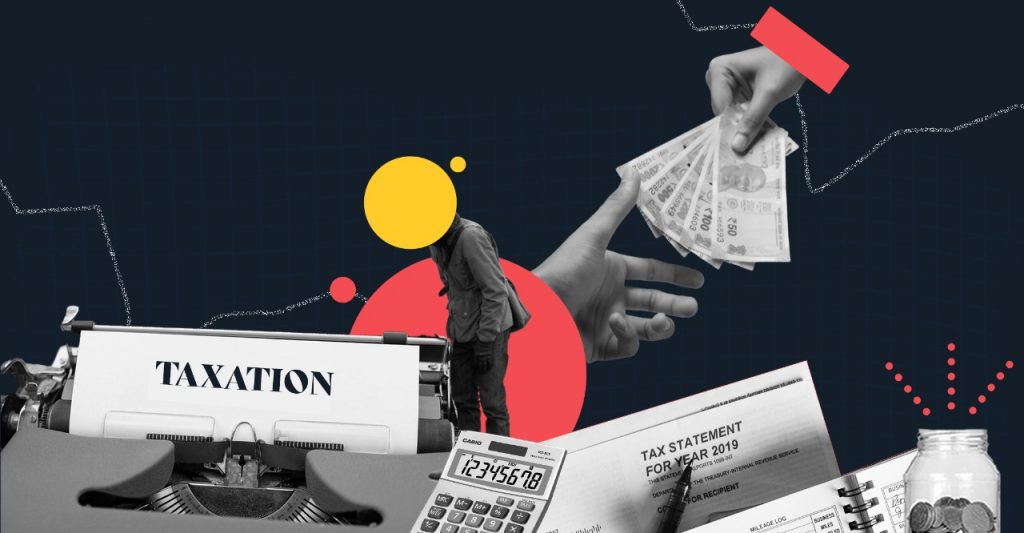Last Updated on Aug 26, 2021 by Aradhana Gotur
The tax on capital gains is bifurcated into two types based on the period of holding of the investment – tax on short-term capital gains and tax on long-term capital gains. This article delves into long-term capital gains tax on shares, how it is calculated and its tax implications.
This article covers:
- What is long term capital gains?
- How to calculate long term capital gains?
- Illustrations for calculation of LTCG
- Tax implications of long term capital gains
Equity markets have held their sway over investors for many years. The potential returns from investing in the stock market, despite its higher risk quotient, is what makes investing in shares alluring. The rate of return on investment from equity shares has historically been much more than the returns from a similar amount invested in other traditional investment options.
The profit you earn from the market when you sell your shares is called capital gains.
While investors are focused on generating higher capital gains from the equity market to fill their bags with, many are unaware that there is a gaping hole in the bag called taxes. Taxes erode your wealth little by little, whisking away parts of your hard-earned money from the markets.
Table of Contents
What is long-term capital gain?
The difference between the selling price and the purchase price of shares is called capital gain. When you sell equity – shares or equity-oriented mutual fund units – after holding for a period of more than a year, the profit earned out of it is termed as long-term capital gain (LTCG).
The time period of 12 mth is applicable only for shares that are listed on the equity market. For unlisted shares, the holding period has to be 36 mth to qualify as a long-term capital asset.
LTCG on shares from sale of listed equity above Rs 1 lakh is taxable without any indexation benefits, at a flat rate of 10%.
How to calculate long term capital gain on shares?
Below are some of the main components that constitute the value of assets, selling which you can make profits or capital gains.
- Sale consideration: the amount receivable on the sale of an asset shall be considered as the sale consideration. In case of shares, the sale consideration will be the selling price excluding securities transaction tax and brokerage charges.
- Cost of acquisition: The cost of acquisition for the long-term capital asset acquired on or before 31st Jan 2018, will be the actual cost.
However, if the actual cost is less than the fair market value of such an asset as on 31st Jan 2018, the fair market value will be deemed to be the cost of acquisition.
Further, if the full value of consideration on transfer is less than the fair market value, then such full value of consideration or the actual cost, whichever is higher, will be deemed to be the cost of acquisition.
In simpler terms, to arrive at the cost of acquisition, consider:
i) The lower of the fair market value and the sale price
ii) Compare that with the purchase price. The higher value will be the cost of acquisition.
Note: According to the Income Tax Department, fair market value is pegged upon the number of shares purchased multiplied by their highest price, as on 31st January 2018.
- Cost of improvement: The brokerage and other expenses incurred on the sale of assets would be included in the cost of improvement. The STT charges would not be considered while calculating cost of improvement.
- Indexation: Cost inflation index (CII) is used to derive the time value of money by taking the index of 1st Apr, 2001 as the base year. This value is published by the central government. The LTCG on shares and funds can be calculated with this index according to the current value of money. Though this helps arrive at the actual worth of your investments, indexation benefit is available only in the taxation of debt funds and other debt-based products. It has no bearing on LTCG on equity shares or equity mutual funds.
The formula to calculate LTCG on shares is pretty straightforward:
Long-term capital gains = Sale consideration – Cost of acquisition
However, the calculation of taxation on it is a little bit more complex as you would have understood from the way the components of the LTCG formula are assessed. We will look at taxation further in the article.
Illustrations for calculation of LTCG
Example 1:
Let’s assume an equity share is acquired on 1st Jan 2018 at Rs 1,250 and its market value is Rs 900 on 31st Jan 2018. The shares were sold on 01st Jun 2019 at Rs 1,500.
The LTCG can be calculated as:
Fair market value as on 31st Jan 2018 of Rs 900 is lesser than the sell value of Rs 1,500. Now, comparing the lesser of the two – Rs 900 – with the buying price – Rs 1,250, we see that the buying price is the greater of the two.
Therefore, the actual cost of acquisition to be considered is Rs 1,250.
Thus, applying the formula for LTCG, it will be Rs 250 (1,500-1,250).
Example 2:
Imagine you bought an equity share on 1st Jan 2018 at Rs 700 and it had a market value of Rs 900 on 31st Jan 2018. You decide to sell it and book your profit on 25th Apr 2019 at Rs 1,050. Let’s calculate the long term capital gain you made:
Your sell value here of Rs 1,050 is lesser than the fair market value on 1st Jan 2018 of Rs 900. Therefore, the fair market value will be your cost of acquisition.
Thus, LTCG will be Rs 150 (1,050-900).
Example 3:
If an equity share bought on 01st Jan 2018 at Rs 500 having a market value of Rs 700 on 31st Jan, 2018 is sold on 21st Nov 2019 at Rs 600, the LTCG shall be calculated as follows:
The lower of the sale value and fair market value, in this case, is the sell value of Rs 600. Now, the higher value between this and the buying price is also Rs 600, the selling price. Therefore, that figure itself becomes your cost of acquisition.
Now applying the formula LTCG = Sale consideration – Cost of acquisition, the LTCG on shares shall be NIL (600-600).
Example 4:
Assuming an equity share is acquired on 01st Jan 2018 at Rs 200 having a market value of Rs 400 on 31st Jan 2018. Let’s say it was sold on 30th Nov 2019 at Rs 150. Can you do the math here to find the LTCG?
- The price at which the share was sold (Rs 150) is lesser than the market fair value as of 31st Jan 2018.
- This lesser value of Rs 150 is lower than the buying price of Rs 200.
Therefore, the cost of acquisition here will be Rs 200 – the higher of the two.
Applying the formula for long term capital gains on shares,
Sale consideration (Rs 150) – cost of acquisition (Rs 200),
we see there is no long term capital gain. This investor actually made a capital loss of Rs 50!
Tax implications on long term capital gains
Before the introduction of budget 2018, long-term capital gain made on the sale of equity shares or equity-oriented units of mutual funds was exempt from tax under Section 10 (38). In the Budget of 2018, it was declared that long term capital gain of more than Rs 1 lakh in a financial year, from the sale of equity shares, shall be liable to tax @ 10%. This shall be applicable to the transfers made on or after 1st Apr 2018.
Example:
Let’s assume you purchased shares for Rs 100 on 30th Sep 2017 and sold them on 31st Dec 2018 for Rs 120. Therefore, the capital gain is Rs 20.
However, the taxation rule came into being only for shares purchased on or after 1st Apr 2018. The value of the stock was Rs 110 on 31st Jan 2018.
Therefore, the capital gain of a part of it – Rs 10 (110-100) shall not be taxable.
The rest – Rs 10 (of the Rs 20) shall be taxable @10%.
The re-introduction of the long-term capital gain under the tax regime in Budget 2018 has complicated the entire system but looking at the LTCG over the more heavily taxed STCG, it can be safely assumed that is a better option for investors to stay invested for the longer term, which comes with its own set of benefits. STCG is charged at 15% tax whereas LTCG is charged at 10% tax on profits above Rs 1 lakh.
- Top Large Cap Funds 2025: Discover Blue Chip Performers - Mar 27, 2025
- Gilt Funds in India: Features, Meaning, and Advantages - Mar 13, 2025
- Best Index Funds in India 2025: Top Performing Mutual Funds - Mar 13, 2025




